
Rhenanida is an order of scaly placoderms. Unlike most other placoderms, the rhenanids' armor was made up of a mosaic of unfused scales and tubercles. The patterns and components of this "mosaic" correspond to the plates of armor in other, more advanced placoderms, suggesting that the ancestral placoderm had armor made of unfused components, as well.

Titanichthys is an extinct genus of giant, aberrant marine placoderm from shallow seas of the Late Devonian of Morocco, Eastern North America, and possibly Europe. Many of the species approached Dunkleosteus in size and build. Unlike its relative, however, the various species of Titanichthys had small, ineffective-looking mouth-plates that lacked a sharp cutting edge. It is assumed that Titanichthys was a filter feeder that used its capacious mouth to swallow or inhale schools of small, anchovy-like fish, or possibly krill-like zooplankton, and that the mouth-plates retained the prey while allowing the water to escape as it closed its mouth. A study has since confirmed this assumption as its jaws are functionally closer to that of filter feeders like baleen whales and basking sharks, and it appears to have developed from benthic durophagists that became pelagic suspension feeders. This would make it the first (known) large-sized vertebrate filter feeder. Titanichthys was estimated to have reached a length of 7–7.6 m (23–25 ft), but Engelman (2023) suggested that Titanichthys was comparable in size to Dunkleosteus, likely measuring about or just over 4.1 metres (13.5 ft) in length.
Heintzichthys is an extinct monospecific genus of arthrodire placoderm that lived what is now Europe and North America during the Famennian stage of the Late Devonian period. The type specimen was discovered in the Cleveland Shale near Cleveland, Ohio, in the United States.

Selenosteidae is an extinct family of small to large-sized arthrodire placoderms from the Late Devonian. With the exception of the Chinese Phymosteus, selenosteids lived in shallow seas in what is now Eastern North America, Eastern Europe, and Northeastern Africa.

Draconichthys elegans a selenosteid arthrodire placoderm from the Late Frasnian Kellwasserkalk facies of the Anti-Atlas Mountains of what is now Morocco. During the Late Devonian, the region would have been a shallow, algae-dimmed sea.

Selenosteus brevis is an extinct large selenosteid arthrodire placoderm known from the Famennian Cleveland Shale of Ohio. Scrappy remains from the Frasnian Rhinestreet Shales of Erie County, New York, were attributed by Hussakof and Bryant to this genus in 1919, but, this identification is doubtful. A second species, S. kepleri, was described in 1901, but, not enough differences can be seen between its specimens, and those of the type species to warrant new species status.

Stenosteus is an extinct monospecific genus of medium-sized selenosteid arthrodire placoderms of the Late Devonian period known from the Upper Famennian Cleveland Shale of Ohio. Estimated skull lengths range from 6 to 9 centimeters Most fossils of Stenosteus have been scraps of armor and portions of tooth-plates suggestive of Selenosteus. In 1996, enough material of a new species, S. angustopectus, was recovered to allow a reconstruction of armor that resembles that of Selenosteus.
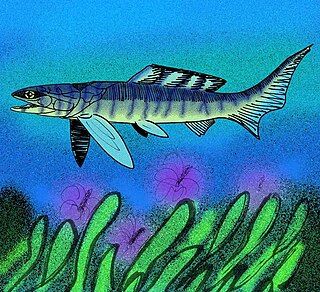
Gymnotrachelus is an extinct monospecific genus of large selenosteid arthrodire placoderm of the Late Devonian known from the Late Famennian Cleveland Shale of Ohio. The type species Gymnotrachelus hydei was originally reconstructed as physically resembling Selenosteus, with slightly smaller orbits. Later specimens led to a reappraisal, and now G. hydei is thought to have a more gar-like or barracuda-like build.

Microsteus is an extinct genus of small selenosteid arthrodire placoderms known from the Upper Frasnian Kellwasserkalk facies of Late Devonian Germany.
Erromenosteus is a genus of extinct, medium-sized brachythoracid arthrodire placoderm from the Late Frasnian of the Kellwasserkalk facies of Late Devonian Bad Wildungen and Bicken, Germany.
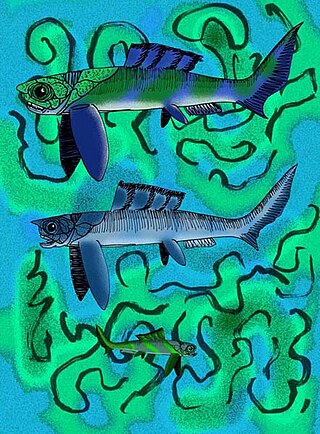
Rhinosteus is an extinct genus of small to medium selenosteid arthrodire placoderms of the Late Devonian known from the Upper Frasnian Kellwasserkalk facies of Bad Wildungen, Germany and Morocco.

Melanomontanosteus is an extinct genus of selenosteid placoderm that lived during the Late Devonian. It contains one valid species, M. occitanus, known from fossils found in Southern France.
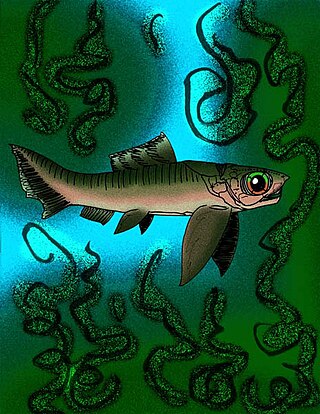
Braunosteus schmidti is a medium-sized selenosteid arthrodire placoderm known from the Upper Frasnian Kellwasserkalk facies of Late Devonian Bad Wildungen, Germany. B. schmidti has a broad skull about 9 centimeters long, and a short, but pointed rostrum. Its appearance is very similar to that of the basal selenosteid Pachyosteus.

Pachyosteus is an extinct monospecific genus of medium-sized selenosteid arthrodire placoderm known from the Upper Frasnian Kellwasserkalk facies of Late Devonian Bad Wildungen, Germany and from the Famennian portions of the Holy Cross Mountains of Poland. The type species Pachyosteus bulla has a broad skull about 7 to 10 centimetres long, a comparatively long median dorsal plate, and a short rostral plate that meets the pineal plate.
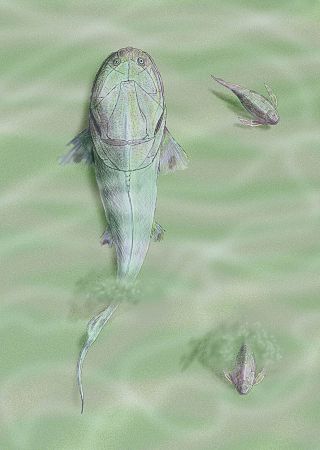
Homostiidae is a family of flattened arthrodire placoderms from the Early to Middle Devonian. Fossils appear in various strata in Europe, Russia, Morocco, Australia, Canada and Greenland.
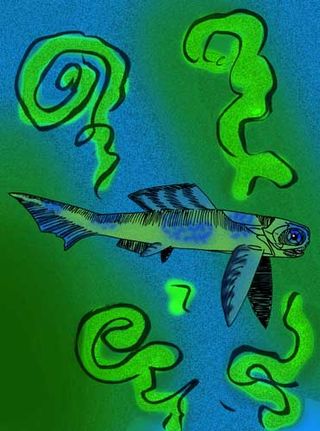
Walterosteus is an extinct genus of small selenosteid arthrodire placoderms known from the Upper Frasnian Kellwasserkalk facies of Late Devonian Germany and Morocco.

Brachydeiridae is a family of small to moderately large-sized arthrodire placoderms from the Late Devonian of Europe, restricted primarily to the Kellwasserkalk Fauna of Bad Wildungen and Adorf.

Brachydeirus is a genus of small to moderately large-sized arthrodire placoderms from the Late Devonian of Europe, restricted to the Kellwasserkalk Fauna of Bad Wildungen and Adorf.

Oxyosteus is a genus of trout-sized, highly compressed arthrodire placoderms from the Late Devonian of Europe: The two described species are restricted to the Late Frasnian-aged Kellwasserkalk Fauna of Bad Wildungen, while a median dorsal plate of an unnamed species is known from the Middle Frasnian Holy Cross Mountains of Poland.
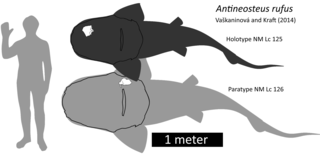
Antineosteus is an extinct genus of homostiid arthrodire from the Emsian, Early Devonian Kess-Kess Mounds, in the eastern Anti-Atlas Mountains, Morocco, and the Barrandian area of the Czech Republic.

























